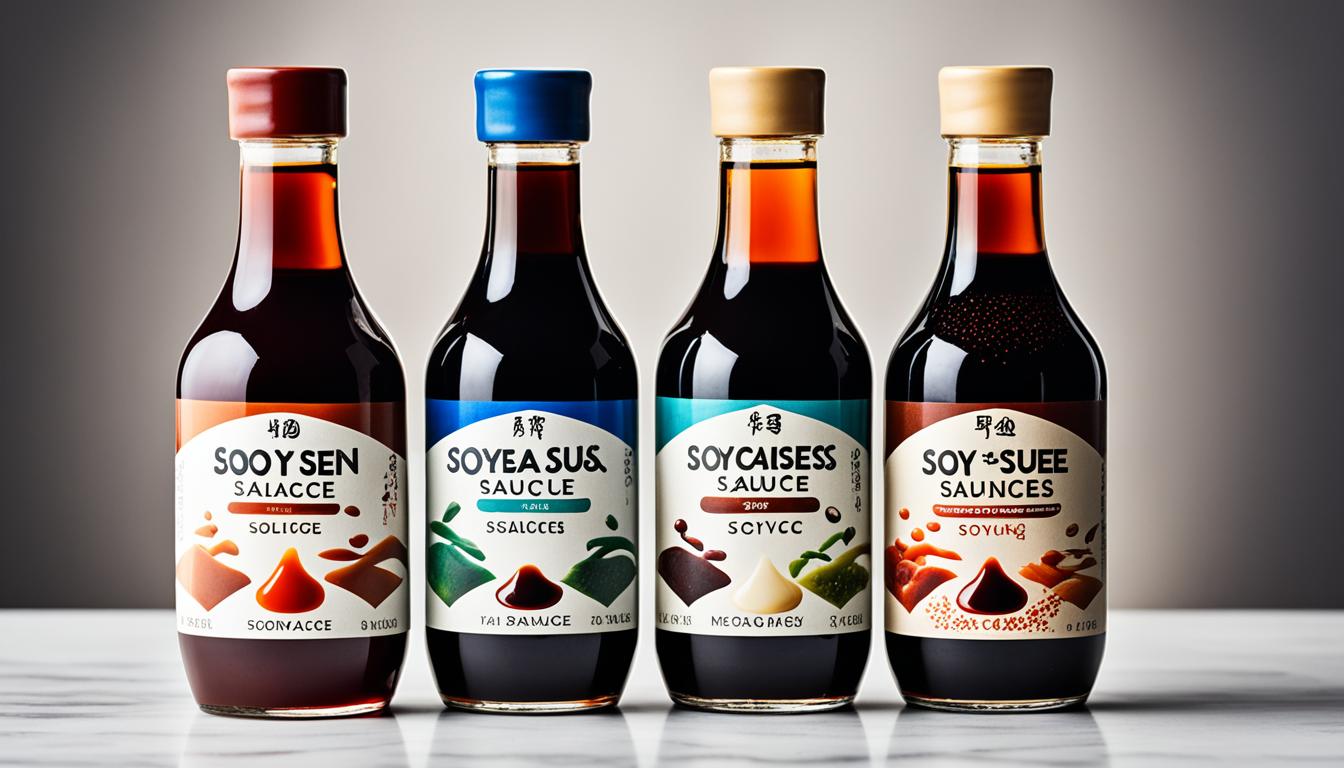Soy sauce is a condiment that has been widely used in various cuisines across the globe. Made from fermented soybeans, water, salt, and grains, it adds a savory flavor and depth to dishes. But did you know that there are distinct variations of soy sauce, each originating from different cultures?
In this article, we will embark on a flavorful journey to uncover the unique characteristics of Japanese, Chinese, and Indonesian soy sauces. From their origins and flavors to their uses and variations, we will delve into the world of soy sauces and unlock the secrets behind these beloved condiments.
So, the next time you reach for that bottle of soy sauce, ask yourself, do you truly know the differences between Japanese, Chinese, and Indonesian soy sauce? Let’s dive in and explore the fascinating world of soy sauces together.
Japanese Soy Sauce: Shoyu, Koikuchi, Usukuchi
Japanese soy sauce, also known as shoyu, is one of the most common types of soy sauce. It has a rich, umami flavor that adds depth to a wide variety of dishes.
When it comes to Japanese soy sauce, there are different types to choose from. One popular variety is koikuchi shoyu. This type of soy sauce is the most commonly used and is characterized by its dark color and full-bodied flavor. It is a versatile all-purpose soy sauce that can be used in marinades, sauces, gravies, and stir-fries.
Another type of Japanese soy sauce is usukuchi shoyu. Unlike koikuchi shoyu, usukuchi shoyu is lighter in color and has a saltier taste. It is mainly used in the Kansai region of Japan and is popular in dishes where the color of ingredients needs to shine through.
Japanese soy sauce, whether it’s shoyu, koikuchi shoyu, or usukuchi shoyu, is an essential ingredient in Japanese cuisine. Its deep umami flavor enhances the taste of various dishes, from sushi and sashimi to teriyaki and ramen. It adds complexity and richness to sauces and dressings, elevating the overall dining experience.
Types of Japanese Soy Sauce:
- Shoyu (Japanese soy sauce)
- Koikuchi shoyu (dark soy sauce)
- Usukuchi shoyu (light soy sauce)
Japanese Soy Sauce Flavors:
- Rich
- Umami
- Full-bodied
- Salty (usukuchi shoyu)
Japanese Soy Sauce Uses:
- Marinades
- Sauces
- Gravies
- Stir-fries
Chinese Soy Sauce: Light Soy Sauce, Dark Soy Sauce
In Chinese cuisine, soy sauce plays a vital role as a flavor enhancer and seasoning. There are two primary types of Chinese soy sauce: light soy sauce and dark soy sauce, each offering its unique characteristics and flavors.
Light Soy Sauce
Also known as “sheng chou,” light soy sauce is a staple in Chinese cooking. It has a lighter color, a higher salt content, and a thinner consistency compared to dark soy sauce. Light soy sauce adds a bright, umami flavor to dishes, making it an essential ingredient for marinades, stir-fries, and dipping sauces.
Dark Soy Sauce
On the other hand, dark soy sauce, or “lao chou,” is darker and thicker with a sweeter flavor profile. While it might seem contradictory, dark soy sauce is not used primarily for taste but for color. Its caramelized and robust flavor is perfect for adding depth and richness to stews, braises, and dishes where a darker, more visually appealing color is desired.
If you’re wondering about the difference in taste between light and dark soy sauces, it’s important to note that the primary distinction lies in their intensity and appearance. Light soy sauce is lighter in both color and flavor, while dark soy sauce has a more pronounced taste and a deep, mahogany hue.
Whether you’re preparing Chinese stir-fries, dipping sauces, or braised dishes, understanding the nuances between light and dark soy sauce can elevate your culinary creations. Experimenting with these flavorsome soy sauces will add an authentic touch to your Chinese dishes and impress your palate.
Indonesian Soy Sauce: Kecap Manis
One unique type of soy sauce is kecap manis, also known as sweet soy sauce, which hails from Indonesia. It is made by cooking soy sauce, palm sugar, garlic, and other ingredients down to a thick syrup. Kecap manis has a sweet, rich flavor with hints of molasses and licorice. It is a key ingredient in Indonesian cuisine and is used in various dishes, such as stir-fries, marinades, and dipping sauces. Its sweet and savory taste adds depth and complexity to the flavors of Indonesian dishes.
